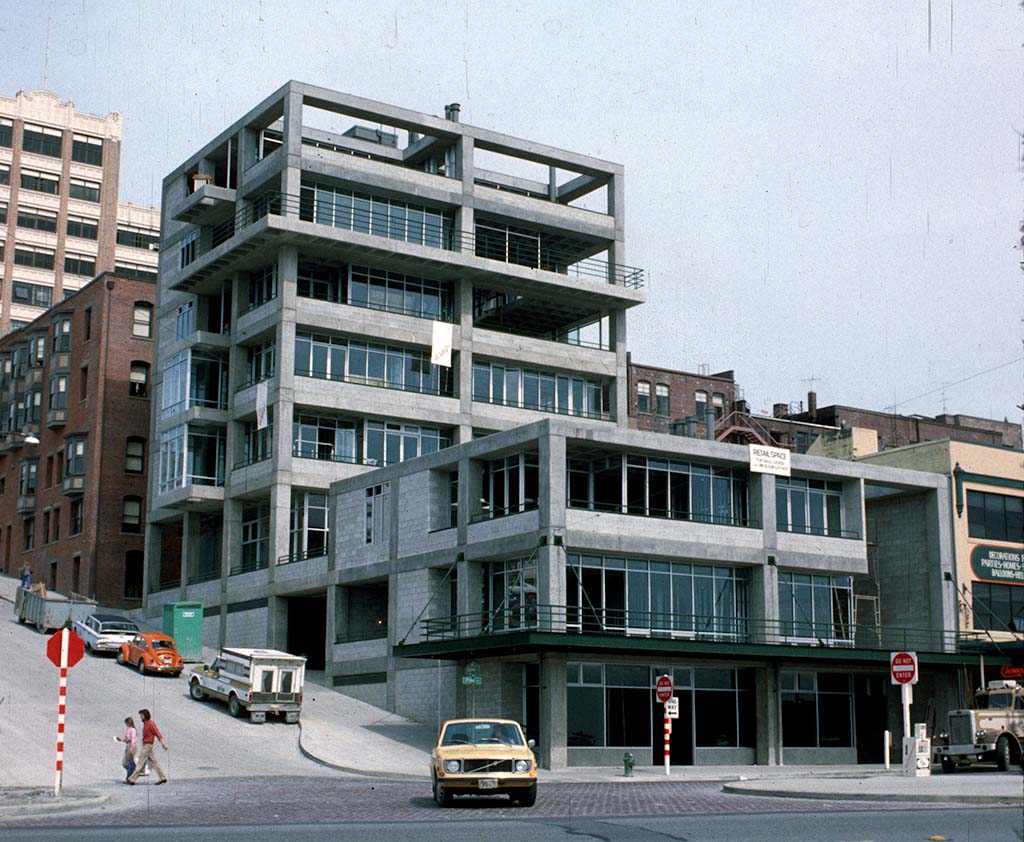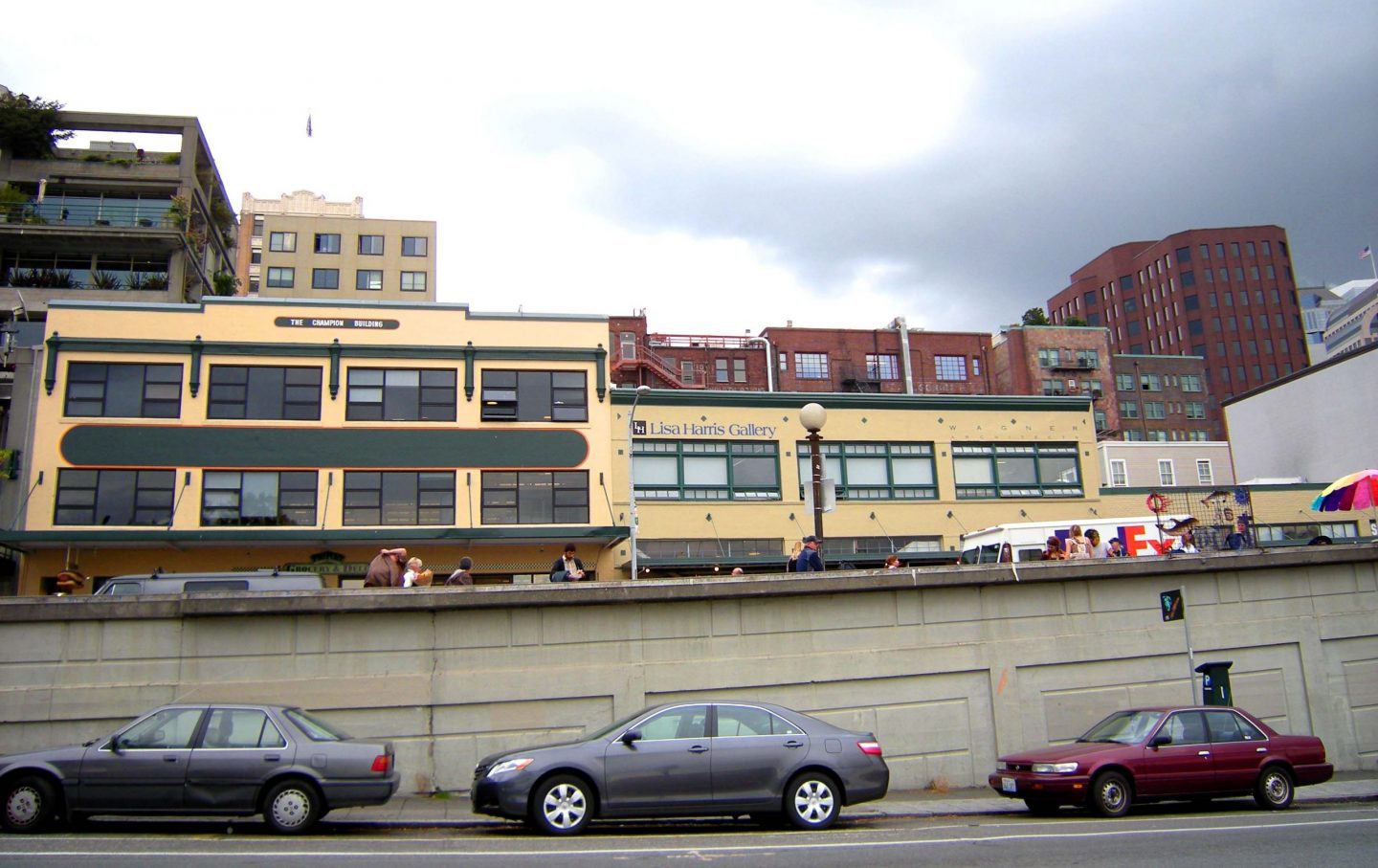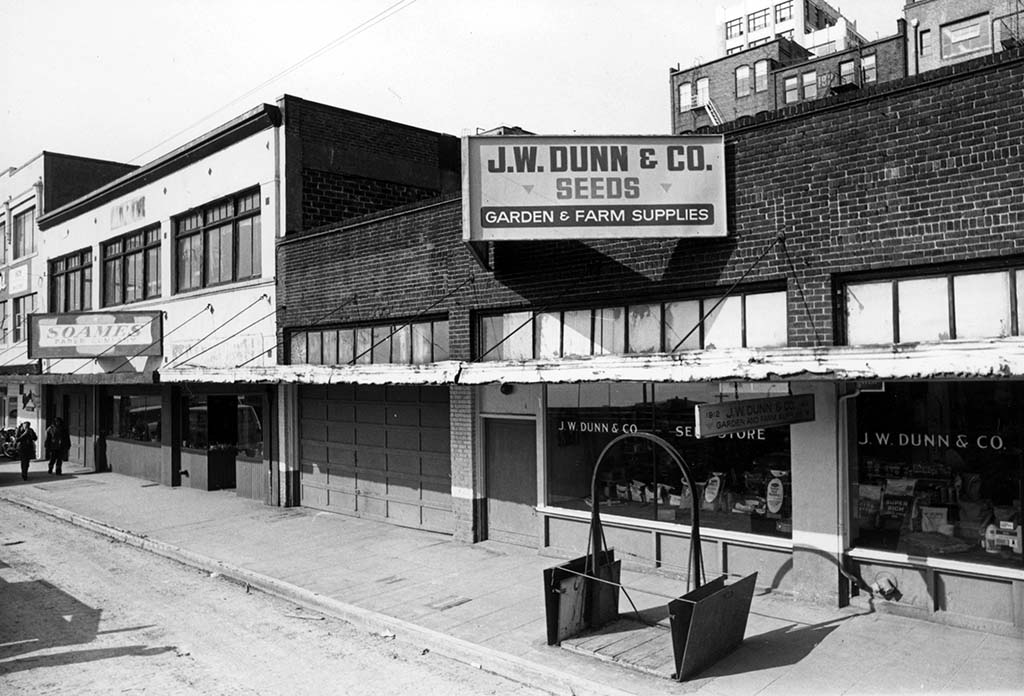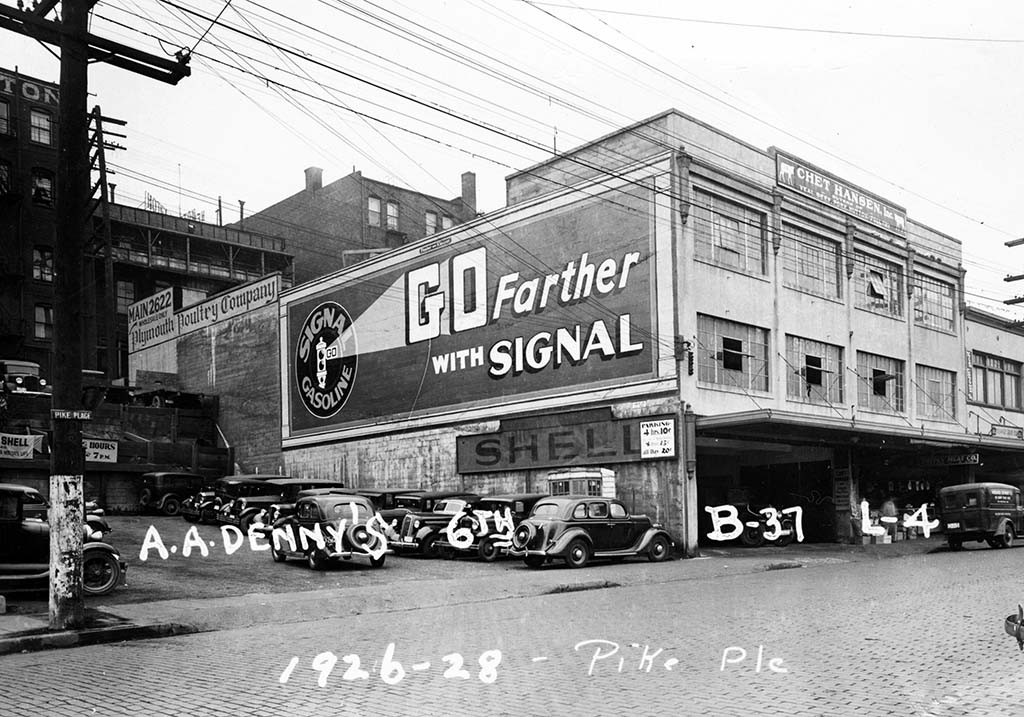Pike & Virginia Building, Champion Building
Pike Place and Virginia St
-
Pike & Virginia Building, Champion Building
Pike Place and Virginia St
Near pergola at southwest corner of Pike Place and Virginia Street
Gazing south along Pike Place affords a moment to appreciate the scale of the historic Market buildings in context with the soaring glass and steel growing behind it them. Immediately east is the Pike & Virginia Building on the former site of a surface parking lot and gas station from 1928 that boasted a single freestanding pump. Built in 1978, this was the Market’s first new structure after the rehabilitation project. One of the few buildings in the neighborhood with an overtly modern appearance, the use of scale and materials by Olsen & Walker Architects pays deference to the utilitarian structures of the market.
The Champion Building stands just to the south. Built to house the Dollar Cab Company in 1928, it was designed by Charles Haynes, whose Seattle designs also included the second Butterworth Mortuary on Capitol Hill. The building is said to have been constructed using “imported Swedish cement.” In the 1930s it became a meat business, and by 1937 a poultry dealer occupied the upper floor. In 1950, Robert W. Champion bought the building and relocated his Champion Display Company here. The Champion family retains ownership of the building to this day, and undertook a rehabilitation project that was completed in 1976.
South of the Champion Building is the Soames-Dunn Building, with its traditional suspended-metal canopy. This was the first major commercial rehabilitation project undertaken by the PDA in 1976. The project connected the Soames (north) and Dunn (south) buildings internally with a common central entryway and small courtyard behind. It was overseen by architect Arne Bystrom. The small storefront at the south end of the building became the new location of the Starbucks Coffee company after it relocated from a storefront on the north side of the foot of Virginia Street in 1976.
The Soames Building was originally a two-story stable building, and in 1937 tax records indicate that a furniture shop operated out of the second floor with a smokehouse and sausage factory below. Permits also indicate that this building housed several Japanese tenants and merchants until the internment in 1942. In 1944 Willard R Soames bought the building. As a child, Soames sold chickens with his father at the Market, and in the 1920s helped create the Associated Farmers of Pike Place Market during the controversy around the Goodwin Group Stalls. By 1940, the Soames Paper Company operated out of the second floor of the building, providing paper bags to Market farmers. The Soames Paper Company also provided all paper products used in the 1962 World’s Fair.
The Dunn Building was constructed in 1918 and housed the C. B. Strong seed company that had relocated from the Silver Oakum building upon losing its lease; the company was apparently part-owner in this structure. An employee of Strong’s, J. W. Dunn, took over the business and renamed the building around 1924, making it the city’s main farm/feed store until the 1950s. City records indicate that this building housed Japanese tenants and fruit merchants throughout the 1920s and 1930s. The building was purchased by the PDA in 1972.
Walk up the steep hill of Virginia Street. This is the original grade of a hill that progressed two more blocks uphill to its apex at today’s 2nd Avenue and Virginia Street. The crown of this hill was lopped off as part of R. H. Thompson’s regrading projects in the early twentieth century. If you want, pause and take a break at the Buster Simpson-designed bench at the mouth of Post Alley. Stop at the southwest corner of First and Virginia, next to the Virginia Inn.




